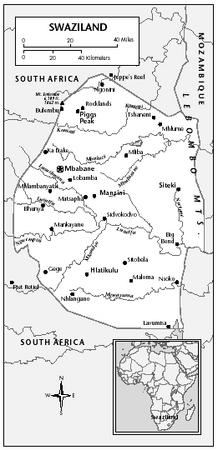Swaziland - Population
The population of Swaziland in 2003 was estimated by the United Nations at 1,077,000, which placed it as number 150 in population among the 193 nations of the world. In that year

It was estimated by the Population Reference Bureau that 26% of the population lived in urban areas in 2001. The capital city, Mbabane, had a population of 73,000 in that year. According to the United Nations, the urban population growth rate for 2000– 2005 was 4.0%.
The prevalence of AIDS/HIV has had a significant impact on the population of Swaziland. The United Nations estimated that 33.7% of adults between the ages of 15–49 were living with HIV/AIDS in 2001. The AIDS epidemic causes higher death and infant mortality rates, and lowers life expectancy.
Comment about this article, ask questions, or add new information about this topic: